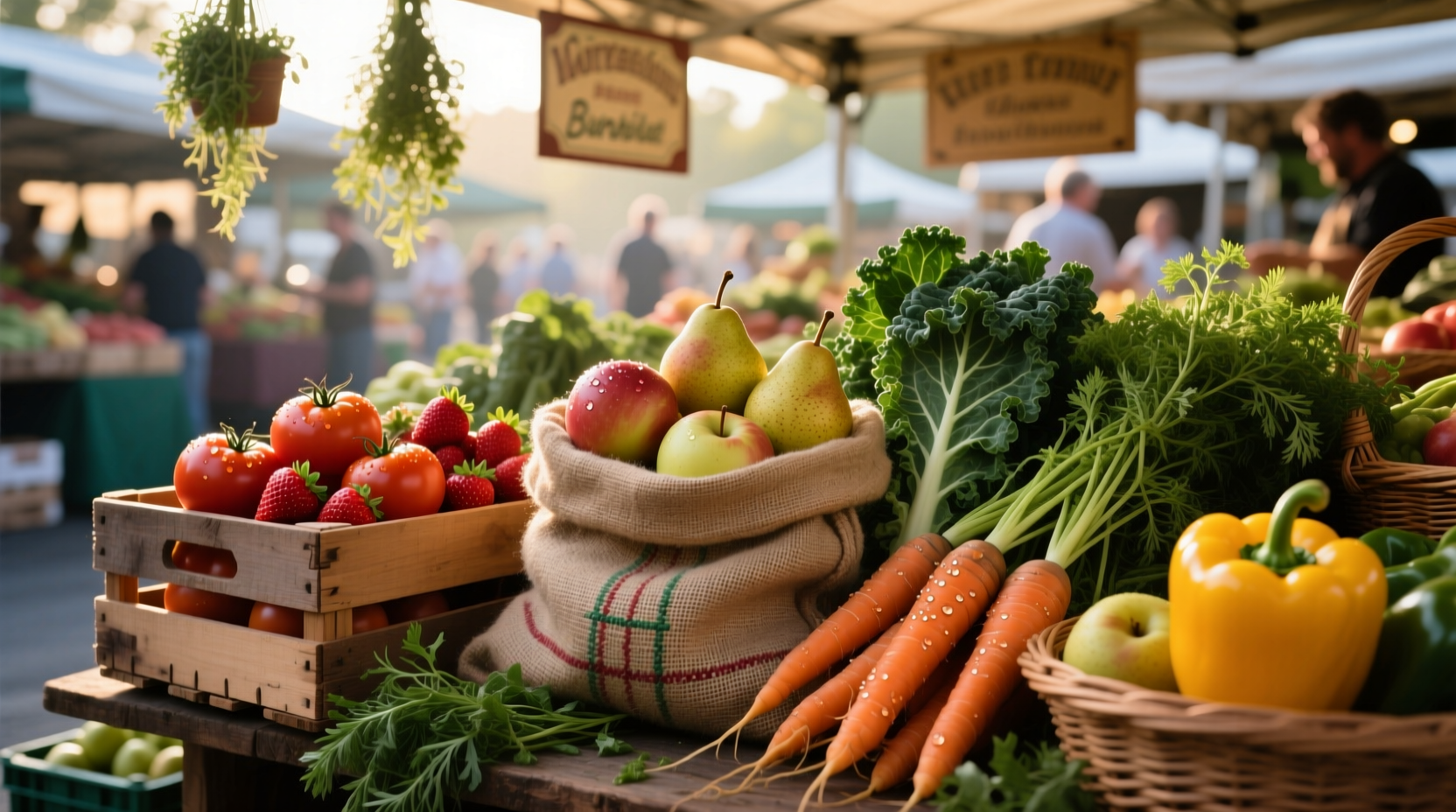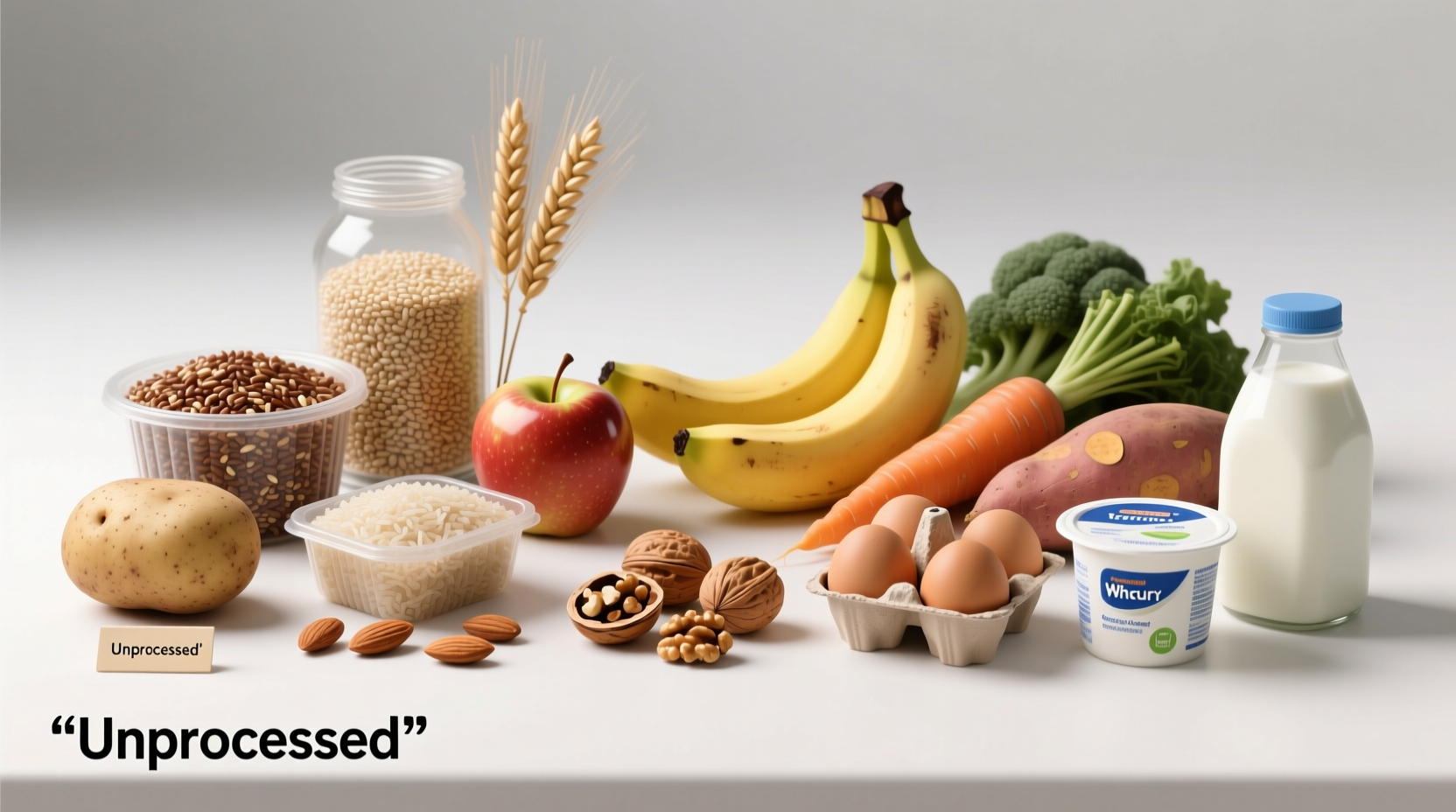Understanding the True Definition of Unprocessed Foods
When you ask what are unprocessed foods, you're seeking clarity in a marketplace filled with confusing labels like “natural” and “minimally processed.” True unprocessed foods undergo zero industrial alteration. They haven't been refined, fortified, or had ingredients added. An apple picked from a tree, wild-caught fish, or raw almonds in their shell represent unprocessed foods in their purest form.
According to the World Health Organization, diets rich in unprocessed plant foods significantly reduce risks of chronic diseases. Their 2023 report emphasizes that “consuming whole, unprocessed foods provides the full spectrum of nutrients in their natural ratios, which our bodies evolved to utilize efficiently.”

Unprocessed vs. Processed: Clearing the Confusion
Many consumers mistakenly believe “processed” simply means packaged foods. In reality, processing exists on a spectrum. Understanding where foods fall on this continuum helps you make informed choices that align with your health goals.
| Unprocessed Foods | Minimally Processed | Highly Processed |
|---|---|---|
| Fresh fruits and vegetables | Pre-cut vegetables | Soda and candy |
| Raw nuts and seeds | Canned beans (no salt added) | Breakfast cereals |
| Whole grains in husk | Plain frozen fruits | Fast food burgers |
| Raw meat and fish | Plain yogurt | Instant noodles |
This Harvard T.H. Chan School of Public Health framework shows how minimal processing (like freezing or pasteurizing) can preserve nutrients while industrial processing often strips away fiber and adds unhealthy components. Their research demonstrates that replacing just 10% of highly processed foods with unprocessed alternatives reduces cardiovascular disease risk by 13%.
The Evolution of Food Processing: A Timeline Perspective
Understanding what are unprocessed foods becomes clearer when examining how food processing has evolved throughout human history. This timeline reveals critical turning points that transformed our relationship with food:
- Prehistoric Era: Humans consumed exclusively unprocessed foods—hunted game, foraged plants, and gathered nuts and seeds
- 10,000 BCE: Advent of agriculture introduced basic processing like grinding grains
- 19th Century: Industrial Revolution brought canning, pasteurization, and basic preservation
- Mid-20th Century: Rise of convenience foods with additives, preservatives, and artificial ingredients
- 2020s: Growing consumer demand for “clean label” products sparks partial return to whole foods
The National Institutes of Health notes that while some processing improves food safety and accessibility, the dramatic shift toward ultra-processed foods correlates with rising obesity rates. Their 2022 study found that “individuals consuming more than 60% of calories from ultra-processed foods had significantly higher rates of metabolic syndrome compared to those eating primarily unprocessed foods.”
Practical Guidance for Identifying Unprocessed Foods
When navigating grocery stores or farmers markets, knowing how to identify unprocessed foods requires specific strategies. Here's what to look for in different shopping environments:
Farmers Markets: Your Best Source for Truly Unprocessed Foods
Directly purchasing from growers ensures maximum freshness and transparency. Ask these questions when shopping:
- “Was this harvested within the last 48 hours?”
- “Do you use any post-harvest treatments?”
- “Is this sold in its natural state without washing or packaging?”
Grocery Store Navigation
Supermarkets present challenges but offer opportunities to find unprocessed options if you know where to look:
- Avoid the center aisles where most processed foods reside
- Read ingredient lists—if there's only one ingredient, it's likely unprocessed
- Beware of “health halo” labels like “natural” which have no regulatory definition
The U.S. Food and Drug Administration confirms that “natural” lacks a strict legal definition, making it unreliable for identifying truly unprocessed foods. Their guidance states: “The FDA has not developed a formal definition for the term ‘natural,’ though the agency has issued guidance on the term's appropriate use.”
Overcoming Common Challenges with Unprocessed Foods
Many people hesitate to embrace unprocessed foods due to perceived barriers. Let's address these concerns with practical solutions:
Budget-Friendly Approaches
Contrary to popular belief, unprocessed foods can be economical when approached strategically:
- Buy seasonal produce—prices drop 30-50% during peak harvest
- Choose frozen when fresh isn't affordable—frozen fruits and vegetables retain nutrients
- Batch cooking reduces time and waste while maximizing value
Time-Saving Preparation Techniques
Modern lifestyles demand efficiency. These methods help incorporate unprocessed foods without added stress:
- Wash and chop produce immediately after shopping
- Create “meal templates” rather than strict recipes for flexibility
- Use multi-cookers to prepare whole grains and legumes with minimal effort
Long-Term Benefits of Choosing Unprocessed Foods
The Centers for Disease Control and Prevention reports that diets centered around unprocessed foods correlate with:
- 25% lower risk of type 2 diabetes
- 30% reduced cardiovascular disease incidence
- 15% lower all-cause mortality rates
- Improved gut microbiome diversity
These benefits stem from the synergistic combination of nutrients found naturally in whole foods—something no supplement or processed “fortified” product can replicate. The fiber, phytochemicals, and natural fats work together to enhance absorption and utilization of essential nutrients.
Frequently Asked Questions About Unprocessed Foods
What's the difference between unprocessed and organic foods?
Unprocessed refers to foods in their natural state with no industrial modification, while organic relates to farming methods without synthetic pesticides or fertilizers. You can have organic processed foods (like organic cookies) and non-organic unprocessed foods (like conventionally grown apples).
Can frozen vegetables be considered unprocessed?
Plain frozen vegetables without added sauces, sugars, or preservatives qualify as minimally processed. The flash-freezing process preserves nutrients effectively, often making frozen options nutritionally comparable to fresh, especially when out of season.
How do I get enough protein eating only unprocessed foods?
Complete protein sources exist in unprocessed foods including quinoa, buckwheat, hemp seeds, and chia seeds. Combining complementary plant proteins (like beans and rice) throughout the day provides all essential amino acids without processed protein supplements.
Are there any unprocessed foods I should avoid?
Some unprocessed foods require caution: raw kidney beans contain phytohaemagglutinin (toxic when raw), certain wild mushrooms are poisonous, and raw sprouts carry higher foodborne illness risk. Proper preparation knowledge is essential for safe consumption.
Does cooking destroy the benefits of unprocessed foods?
Cooking affects different nutrients variably. While some vitamins degrade with heat, others like lycopene in tomatoes become more bioavailable. Steaming, roasting, and stir-frying generally preserve more nutrients than boiling. The key is variety in preparation methods to maximize overall nutrient intake.











 浙公网安备
33010002000092号
浙公网安备
33010002000092号 浙B2-20120091-4
浙B2-20120091-4